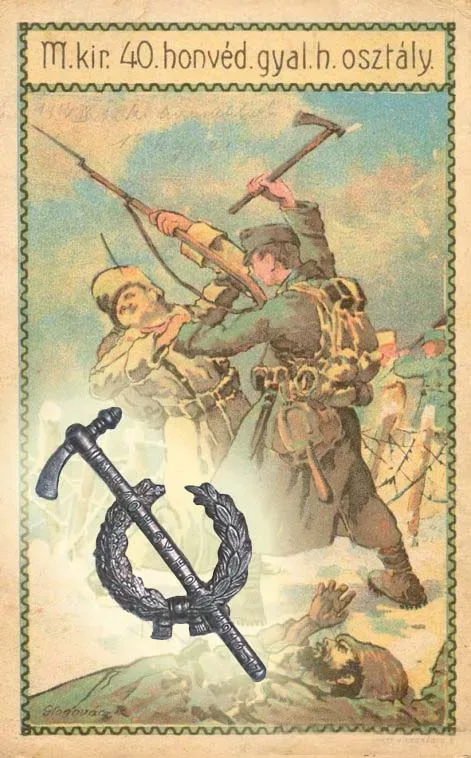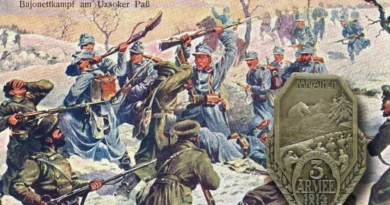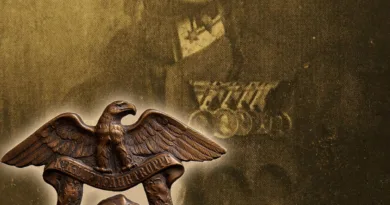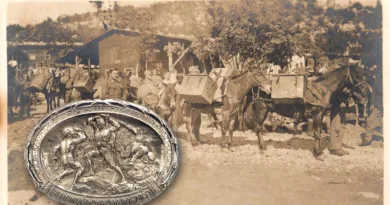December 1915 Rarancze
Already the November war diary mentioned, that the Russian army, defeated in May-June 1915, was able to rearrange its ranks during the autumn and showed increasing resistance to the pursuing German and Austro-Hungarian troops. This process continued throughout the winter. So much so that in December the Russian army was able to launch a more serious offensive in Bukovina. The primary aim of the attack was to occupy Czernowitz, close to the front line, and to re-occupy potentially the whole of Bukovina. If successful, the Russian army was also preparing to attack further north, in eastern Galicia. The plan of the attack was known to the Central Powers in time and the defense was strengthened in the main directions of attack. It was then that flamethrowers were first installed in the defensive positions and significant heavy artillery also arrived as reinforcements.
The Russian attack began on December 27th. The Russian 9th Army, under the command of General Lechitski, attacked the positions of the Austro-Hungarian 7th Army. Most heavily the XI. corps was subjected to an attack in the hills surrounding Czernowitz in the north-east. The Russian attack here was strongest around the villages Toporoutz and Rarancze. The 42nd and 51st Divisions and the Papp Brigade were only able to stop the attack with great casualties. The army command, redeployed additional forces from Galicia in the main direction of the attack. Among them was the 40th Honvéd Infantry Division.

From January 8, 1916, the concentrated Russian attack continued in Bukovina with renewed vigor, around Rarancze. The 40th Division here took over the front line of the 42nd Division on January 9th. On the attached map, the two settlements to the north-east of Czernowitz are clearly visible, with the positions of the 51st and 40th divisions in the upper right-hand corner of the picture. During the fighting, the strikes of the enemy’s combined artillery caused most of the losses. On 11 January, following artillery shelling, 6 Russian regiments carried out mass attack in the Rarancze district in just 4 km wide section. The advancing Russian troops were completely crumbled in the fire of defense. The 40th Division could defend its positions from Russian invasions at the cost of enormous casualties, often in close combat.

An ancient weapon the “fokos” was distributed for the soldiers of the 40th Division by this time. This long-handled ax from the Middle Ages became the most important tool in trench combat. The regiments of the 40th Division all used it, so much so that their badges usually show this device. The nickname of the division became “Fokos Division”. This weapon has also had a lot of work to do in averting the January 11 attack.
On January 19, Russian troops waged another final desperate attack to capture the hills above Czernowitz. The attack again hit the 40th Honvéd Division, which was defending the edge of the hill. The course of the previous battle was repeated. The attackers, decimated by artillery, fought close combat with the defenders in the trenches they had achieved. They could not occupy the lines even now. The 40th division lost nearly 500 dead and 1,400 wounded on this single battle day. The event of a successful defense was also detailed in the Höfer report, published every day on the course of the war. The 19th and 306th Honvéd Infantry Regiments also received praise from the Commander-in-Chief of the Army. Four of the crew were awarded first-class bravery medals. The commander of the 19th Infantry Regiment, Colonel István Sréter, won the Knight’s Cross of the military Maria Theresa Order.

The “fokos” involved in countering the Bukovinian offensive also appears on several badges. The 40th division’s badge is shown in the opening image. This weapon also appears on the cap badges of the 6th and 19th Infantry Regiments. In the other badge picture attached to the post, we can also read Rarancze’s name in the list of the victorious struggles of the 19th Honvéd Regiment.




